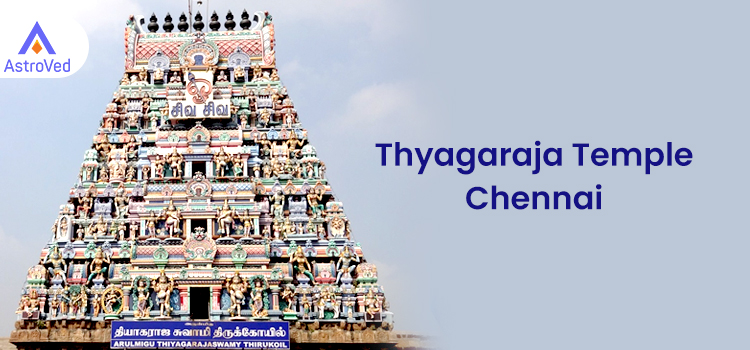Tharamangalam Temple refers to the Kailasanathar Temple in the municipal town of Tharamangalam in the Salem District of Tamil Nadu. It is dedicated to Shiva, whom people worship here as Kailasanathar, the Lord of Kailasa, the legendary mountainous abode of Shiva. This Temple is well-known for its architectural and sculptural significance.
Taramangalam is about 30 km from Salem town.
Tharamangalam Temple Legend
There is an interesting legend about the origin of the Tharamangalam Temple. Sometime during the 12th century, the ruler of the region came to know that a cow out of a herd of bovines that went for grazing was releasing milk on its own, daily at an anthill at a particular spot. The ruler got the anthill dug, where he was astonished to find a Shiva Linga. He immediately started worshiping the Linga with all reverence, while the kings and rulers who followed built a Temple there, which is the Tharamangalam Kailasanathar Temple of the present times.
According to another legend, it was here that Shiva and Parvati got married when Vishnu offered his sister Parvati in marriage to Shiva. This is why this place got the name Dhara Mangalam or Tharamangalam, the location where Vishnu offered his sister’s hand to Shiva.
Tharamangalam Temple History
This is a place of worship built over many centuries by kings belonging to different dynasties. According to historical records, at least some portions of this Temple existed even in the 10th century CE. Then, the Getti Mudhali dynasty of the 17th century expanded the Temple structure, and the rulers who came subsequently, like Mummudi Chozha and Seeyazhi King, renovated the Temple and celebrated festivals. We understand that it was only during the reign of King Vanangamudi that the Tharamangalam Temple was completed and reached the shape we find today.
Tharamangalam Temple Structure
An imposing 5-tier, 90-foot principal tower welcomes us to this west-facing ancient Shiva Temple. It has also been designed like a big chariot drawn by elephants and horses. A huge 306 x 164-foot stone wall erected in the 13th century surrounds the Temple complex. The main entrance has a step made of coral stone; sitting on this step, even for a short while, can reduce our body heat and cool our system.
The presiding deity here is Lord Kailasanathar, and his consort is Goddess Karpagambal. According to beliefs, the Sun and Moon Gods come here to worship the deity at the holy occasions marking the start of Uttarayana (mid-January) and Dakshinayana (mid-July), when the lights of the Sun and Moon fall on the Lingam in the evenings. It is incredible that the sunlight enters the Temple through the main entrance, passes through the Nandi Mandapam, crosses the 3 entrances further inside, and ultimately falls on the Lingam in the sanctum.
It is also said that on the 9th, 10thand 11th of the Tamil Month Masi (February-March), the sunlight goes between the horns of Shiva’s mount Nandi and falls on the Lingam, like the crescent of the third Moon. Many devotees visit the Temple on these days to witness the phenomenon.
Tharamangalam Temple has a shrine for Surakeswara, a unique God with 3 heads and 3 legs. People believe that praying to him with some special offerings can cure all kinds of fevers and even chronic illnesses. An airtight shrine in the basement below the ground level has the Pathala Lingam; devotees believe that praying to him on Tuesdays by offering borneol can help fructify marriages and grant progeny blessing and professional advancement.
Tharamangalam Temple, a Sculptural Treasure Trove
It is no gainsaying that the Tharamangalam Kailasanathar Temple remains a treasure house of our ancient architectural and sculptural splendor. The walls of the shrines and pillars are studded with intricate designs and delicately carved stone sculptures. A chain, a lotus flower, and a majestic lion, all carved out of stone, are worth mentioning here.
A pillar in the front hall of the Tharamangalam Temple carries the image of Rama, and another pillar, the image of the monkey-king Vali. These two sculptures are so designed that the Vali image is visible from where the Rama image is sculpted, but Rama is not visible from where Vali is, as if to prove the Ramayana epic right! Likewise, the God of love, Manmatha, and his consort Rathi are sculpted in different pillars, with Rathi visible to Manmatha but not vice versa.
The Temple also has an image of the mythological animal Yali with its mouth open, and we find a spherical stone in its mouth. This stone is not fixed to the mouth and is free-moving. We can roll it in whatever way we want, but we cannot pull it out of Yali’s mouth!
Another note-worthy sculpture is the face of a man, with minute holes and channels that can accommodate only ants! These tiny creatures can enter his head through the hole in one ear and come out through the nostril. They can also enter through the holes in the man’s beard and come out through the other ear! Such is the quality and beauty of its intricate workmanship!
Tharamangalam Temple sculptures also contain scenes about Malik Kafur’s invasion of the south. While he carries the wealth and valuables he looted on his army of elephants and camels, we can see Getti Mudhali’s men intercepting him and retrieving part of his loot.
Thus, Tharamangalam Temple is a holy place people should visit to seek Divine grace and also to appreciate the greatness of our rich heritage.


